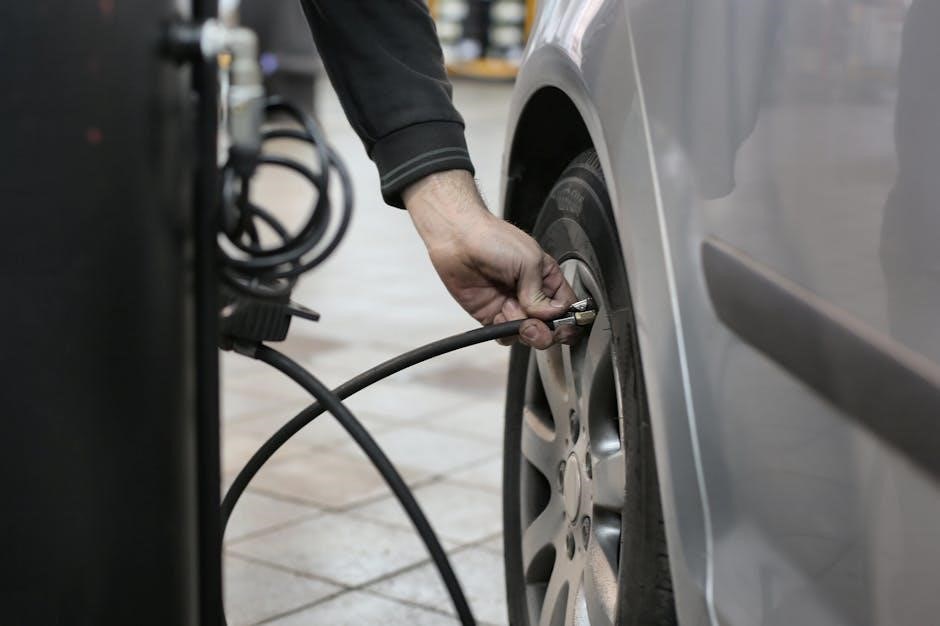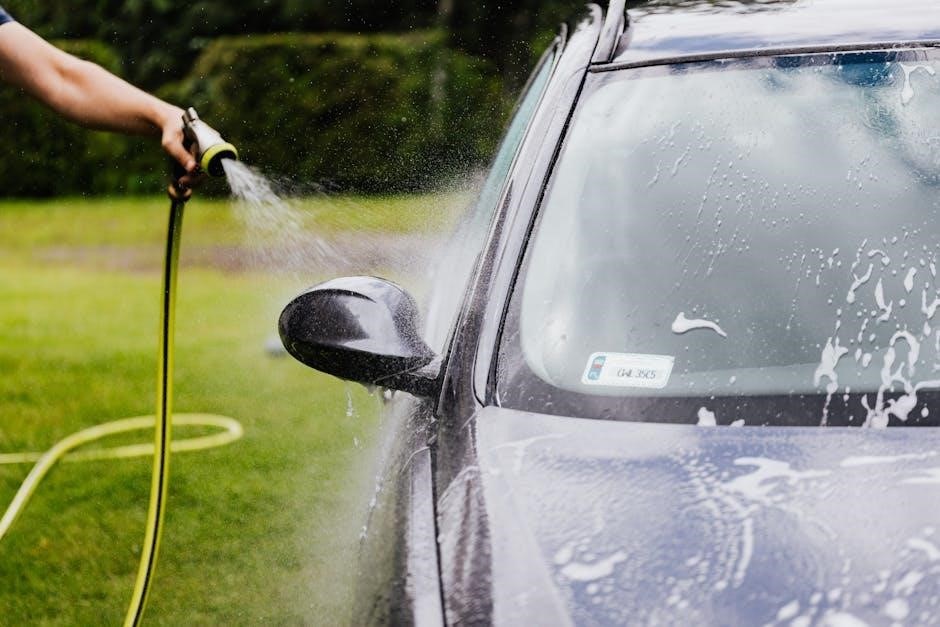
goodman furnace service manual
Goodman Furnace Service Manual Overview
The Goodman furnace service manual is crucial. It provides essential guidance for technicians. This ensures safe and effective furnace maintenance. It covers troubleshooting‚ repair‚ and component replacement procedures for optimal performance.
Importance of the Service Manual
The Goodman furnace service manual is an indispensable resource for technicians. It ensures the safe and effective maintenance and repair of Goodman furnace systems. This manual acts as a comprehensive guide‚ offering detailed instructions on troubleshooting common issues. It also covers component replacement procedures. Proper adherence to the manual’s guidelines is critical for optimal furnace performance and longevity. The manual also provides crucial safety information. It outlines precautions to prevent accidents and ensure the well-being of technicians and homeowners. The service manual includes wiring diagrams. It also includes diagnostic flowcharts. These are essential for accurately identifying and resolving electrical and mechanical problems. Regular reference to the service manual enhances the technician’s understanding of the furnace’s operation. It also enables efficient and accurate repairs‚ minimizing downtime and maximizing customer satisfaction. The manual’s clear and concise instructions facilitate consistent service quality‚ ensuring that all repairs are performed to Goodman’s specifications.
Finding the Correct Manual
Locating the correct Goodman furnace service manual is paramount for effective maintenance and repair. The first step involves identifying the furnace’s model number‚ typically found on a rating plate inside the unit’s control compartment or on the exterior casing. Once you have the model number‚ visit the official Goodman website or reliable HVAC parts suppliers’ websites. These sites usually have a comprehensive database of manuals. Use the model number as a search query to find the corresponding manual. Ensure the manual matches the specific series and revision of your furnace. Cross-referencing the serial number can further confirm compatibility. If the manual is unavailable online‚ contacting a Goodman distributor or certified HVAC technician can provide access to the correct documentation. Having the accurate manual ensures that you have the right information. This is essential for troubleshooting‚ repairs‚ and parts replacement‚ preventing potential damage and safety hazards.
Addressing common furnace issues requires a systematic approach. No heat‚ ignition problems‚ and unusual noises can indicate underlying problems. Diagnosing these issues using the service manual ensures efficient troubleshooting and repair.
No Heat Output
When a Goodman furnace fails to produce heat‚ several factors might be responsible. First‚ verify the thermostat is correctly set to “heat” and the desired temperature. Check the gas supply to ensure the valve is open and there are no interruptions. A tripped circuit breaker can also cut power to the furnace‚ preventing it from starting. Inspect the air filter; a clogged filter restricts airflow‚ potentially causing the furnace to overheat and shut down. The flame sensor could be dirty‚ preventing it from detecting the flame and allowing the gas valve to remain open. If these basic checks don’t resolve the issue‚ further diagnostics involving the igniter‚ gas valve‚ and control board may be necessary‚ referencing the service manual for guidance.
Furnace Not Igniting
A Goodman furnace failing to ignite often stems from a faulty igniter. The igniter’s role is to generate the heat needed to ignite the gas. Use a multimeter to test the igniter for continuity‚ replacing it if it’s defective. A malfunctioning gas valve‚ responsible for releasing gas into the burner‚ can also be the culprit. Ensure the valve is receiving the correct voltage and is opening properly. The flame sensor‚ if dirty or damaged‚ may not detect the flame‚ causing the gas valve to shut off prematurely. Check the furnace’s error codes; they could provide specific clues about ignition failures. Finally‚ confirm the furnace is receiving adequate voltage and that the gas pressure is within the specified range. Consulting the service manual is crucial for accurate diagnosis and repair.

Troubleshooting Common Issues
Unusual Noises
Unusual noises emanating from a Goodman furnace often indicate mechanical issues. A squealing sound typically points to a failing blower motor bearing. Lubricating the bearings might provide a temporary fix‚ but replacement is often necessary. Rattling noises could be due to loose panels or debris within the blower housing. Ensure all panels are securely fastened and inspect the blower wheel for obstructions. A humming sound might suggest a problem with the transformer or a capacitor. Test the transformer’s output voltage and check the capacitor’s capacitance. Grinding noises are serious and could indicate a failing inducer motor or a damaged blower wheel. Immediately shut down the furnace and consult a qualified technician. Always refer to the service manual for specific troubleshooting steps and component locations. Neglecting unusual noises can lead to further damage and costly repairs.

Maintenance Procedures
Regular maintenance is critical for Goodman furnace longevity. Key procedures include filter replacement. Also important are blower motor lubrication‚ and flame sensor cleaning. These steps ensure efficient operation and prevent costly repairs.
Filter Replacement
Replacing the air filter is a fundamental maintenance task for your Goodman furnace. A clean filter ensures optimal airflow‚ preventing the system from overworking. This enhances efficiency and prolongs the furnace’s lifespan.
Regular filter replacement also improves indoor air quality. Dirty filters trap dust‚ pollen‚ and other allergens‚ recirculating them throughout your home. A clean filter minimizes these pollutants‚ creating a healthier living environment.
The frequency of filter replacement depends on factors such as the type of filter used‚ the presence of pets‚ and the overall air quality in your area. As a general guideline‚ replace disposable filters every one to three months. Inspect your filter monthly and replace it when it appears dirty or clogged.
Blower Motor Lubrication
Proper lubrication of the blower motor is essential for maintaining the efficient operation of your Goodman furnace. The blower motor is responsible for circulating air throughout your home. Friction can increase‚ leading to overheating and premature failure if it is not well lubricated.
Lubricating the blower motor reduces friction‚ ensuring smooth and quiet operation. This also helps to extend the lifespan of the motor‚ preventing costly repairs. Refer to your service manual for the recommended type of lubricant and the specific lubrication points.
Typically‚ you will need to apply a few drops of oil to the motor’s bearings. Avoid over-lubricating‚ as this can attract dust and debris. Some blower motors are permanently lubricated and do not require manual lubrication. Always consult your service manual for guidance.
Flame Sensor Cleaning
The flame sensor is a critical safety component in your Goodman furnace; It detects the presence of a flame. It ensures that gas is only supplied when the flame is present. Over time‚ the flame sensor can accumulate dirt and carbon deposits‚ which can interfere with its ability to detect the flame accurately.
A dirty flame sensor can cause the furnace to shut down prematurely. The furnace may exhibit short cycles‚ and the furnace might fail to ignite at all. Cleaning the flame sensor is a simple maintenance procedure that can prevent these issues.
To clean the flame sensor‚ first turn off the furnace and gas supply. Then‚ carefully remove the flame sensor and use a piece of fine-grit sandpaper or steel wool to gently clean the rod. Reinstall the flame sensor and restore power to the furnace. Regular cleaning ensures reliable furnace operation.
Goodman furnace error codes pinpoint issues. The service manual deciphers these codes. Technicians can diagnose problems efficiently. This will reduce downtime. It will ensure accurate repairs.
Common Error Code Meanings
Goodman furnace error codes are vital for diagnosing malfunctions. These codes‚ displayed on the control board‚ offer a starting point for troubleshooting. The service manual is essential for interpreting these codes accurately. Each code corresponds to a specific issue‚ such as ignition failure‚ flame sensor problems‚ or airflow restrictions.
Understanding these codes helps technicians quickly identify the source of the problem. This reduces diagnostic time and ensures efficient repairs. For instance‚ a code indicating a faulty flame sensor can prompt immediate inspection and replacement of that component. Similarly‚ an error related to airflow might suggest a clogged filter or a malfunctioning blower motor. The manual provides detailed explanations. This will help technicians understand each code’s implications. It also guides them through the necessary steps to resolve the underlying issues.

Understanding Error Codes
Interpreting the Error Code Table
The Goodman furnace service manual contains a comprehensive error code table. This table is a vital resource for technicians. It provides detailed information about each error code. This includes its possible causes and recommended solutions. The table typically lists the error code. It also includes a brief description of the fault‚ and potential components to inspect.
Using the error code table effectively requires careful attention to detail. Technicians must cross-reference the displayed code with the table’s entries. This will identify the most likely cause of the problem. For example‚ if the table suggests checking the gas valve or pressure switch‚ these components should be prioritized during inspection.
Furthermore‚ the error code table often includes troubleshooting steps. This will guide technicians through the diagnostic process. It helps them pinpoint the exact component that needs repair or replacement. Proper interpretation ensures efficient and accurate furnace repairs.

Electrical Components and Testing
Goodman furnace service involves electrical component testing. This includes the igniter‚ thermostat‚ and wiring. Proper testing ensures safe and efficient furnace operation. Faulty electrical components often cause heating malfunctions.
Testing the Igniter
Testing the igniter is a crucial step in Goodman furnace service. A faulty igniter often prevents the furnace from igniting properly. Technicians should first visually inspect the igniter for any signs of damage‚ such as cracks or breaks.
To test the igniter‚ disconnect the power to the furnace for safety. Use a multimeter to measure the resistance of the igniter. A reading outside the manufacturer’s specified range indicates a defective igniter.
Alternatively‚ a non-contact voltage tester can confirm voltage supply to the igniter during the ignition sequence. If the igniter receives voltage but doesn’t glow‚ it needs replacement. Always refer to the Goodman furnace service manual for specific testing procedures and safety precautions. Replace the igniter with an OEM part to ensure proper fit and function. Incorrect installation can lead to further issues.
Checking the Thermostat
Checking the thermostat is crucial when troubleshooting Goodman furnace issues. A malfunctioning thermostat can prevent the furnace from operating correctly. Begin by ensuring the thermostat is set to “heat” and the temperature is higher than the current room temperature. Verify that the thermostat’s batteries are fresh‚ as low batteries can cause erratic behavior.
Inspect the wiring connections at the thermostat and the furnace control board. Loose or corroded wires can disrupt communication. Use a multimeter to test for continuity between the thermostat wires and the furnace terminals. If there’s no continuity‚ check for breaks in the wiring.
If the wiring is intact‚ test the thermostat’s functionality by manually adjusting the temperature. Listen for a click sound‚ indicating the thermostat is signaling the furnace to turn on. If there’s no click‚ the thermostat may need replacement. Always consult the Goodman furnace service manual for specific wiring diagrams and troubleshooting tips.

